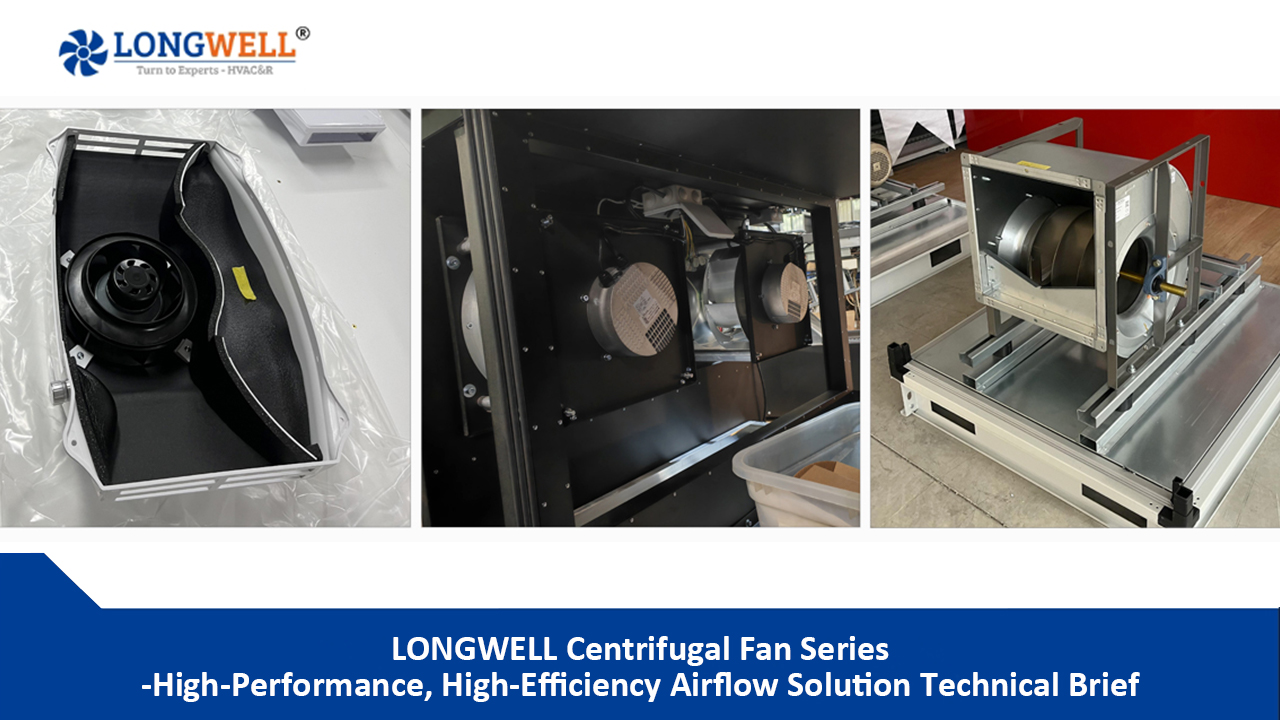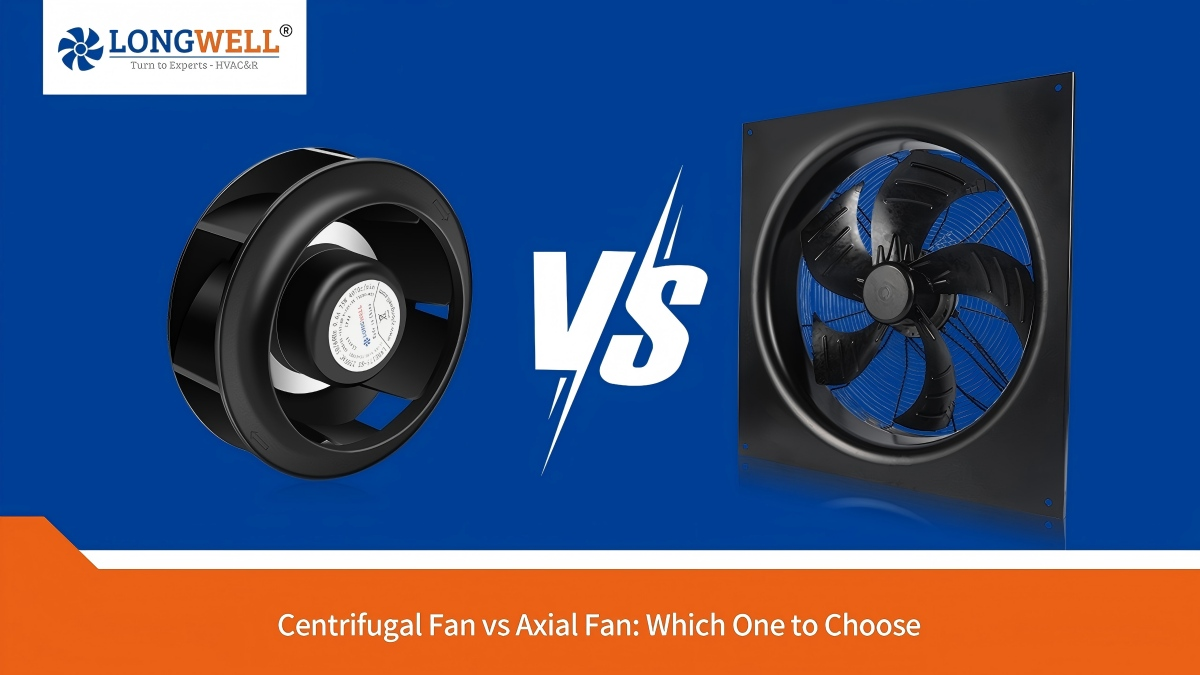You see axial flow fans everywhere in modern industry. These fans move huge amounts of air, helping you keep factories cool and clean. You can find an axial flow fan in places like shopping malls, server rooms, and even greenhouses. New smart controls and energy-saving motors make them better every year. With an axial flow fan, you solve problems such as poor air quality and high energy costs. The following is an introduction to 10 industrial uses of Axial Flow Fans!
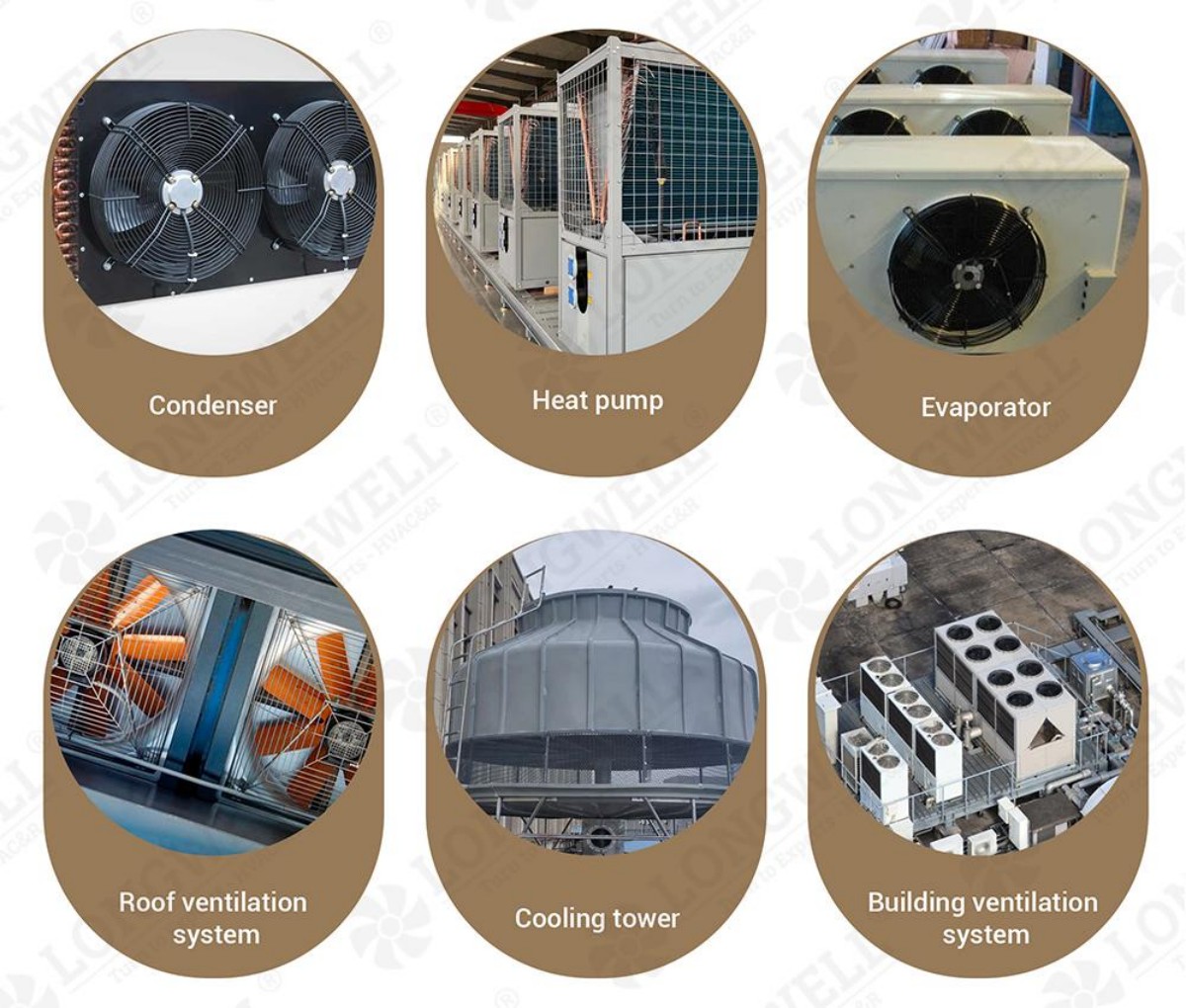
Key Takeaways
Axial flow fans push a lot of air very well. They help make the air cleaner and cooler in many factories.
Smart controls and sensors change the fan speed by themselves. This saves energy and keeps places safe and comfy.
These fans keep workers and machines safe. They take away dust, fumes, heat, and bad gases in factories, mines, and workshops.
Axial flow fans help people work better and stay safe. They are used in data centers, greenhouses, animal barns, and chemical plants.
New technology and energy-saving designs make these fans better. They are now more reliable, cheaper, and better for the planet in the future.
HVAC Systems
Ventilation
You need fresh air in every building. An axial flow fan helps you move large amounts of air quickly. You can use these fans in office buildings, shopping malls, and factories. When you turn on the fan, it pulls in clean air from outside and pushes out stale air. This process keeps the air inside healthy for everyone. You also reduce the risk of mold and bad smells. In 2025, many buildings use smart controls to adjust fan speed. These controls save energy and keep the air just right. For example, a shopping mall uses sensors to check air quality. When the air gets stuffy, the system tells the fan to work harder. You get better air without wasting power.
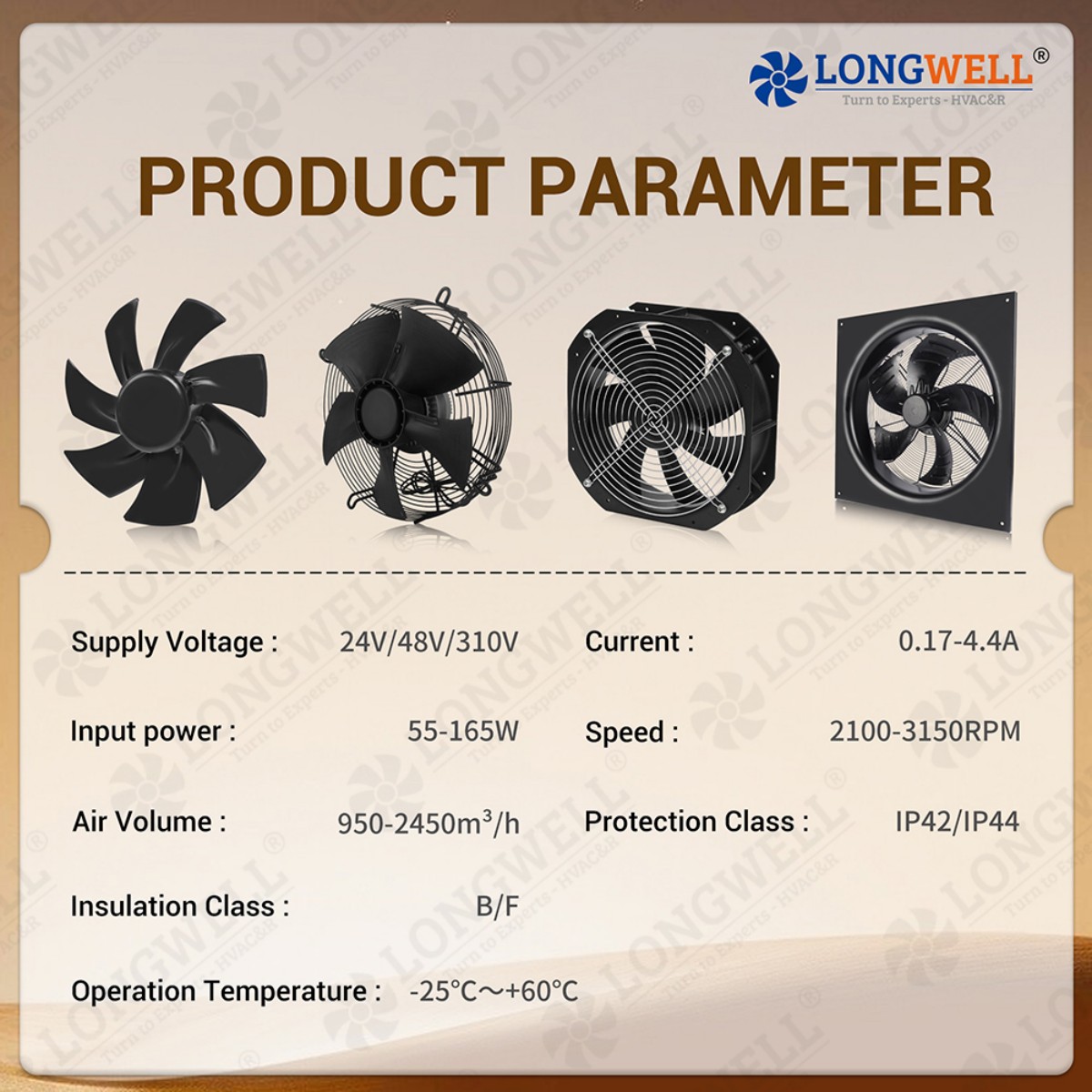
Air Conditioning
You want cool air on a hot day. An axial flow fan helps your air conditioning system work better. The fan moves cold air through large spaces, so every corner feels comfortable. In big places like airports or sports arenas, you need strong airflow. The fan pushes cool air into every room and pulls warm air out. This keeps the temperature steady. You also save money because the system does not have to work as hard. Many new air conditioning systems use fans with energy-saving motors. These motors use less electricity and last longer. You get a cooler building and lower bills.
Industrial Ventilation
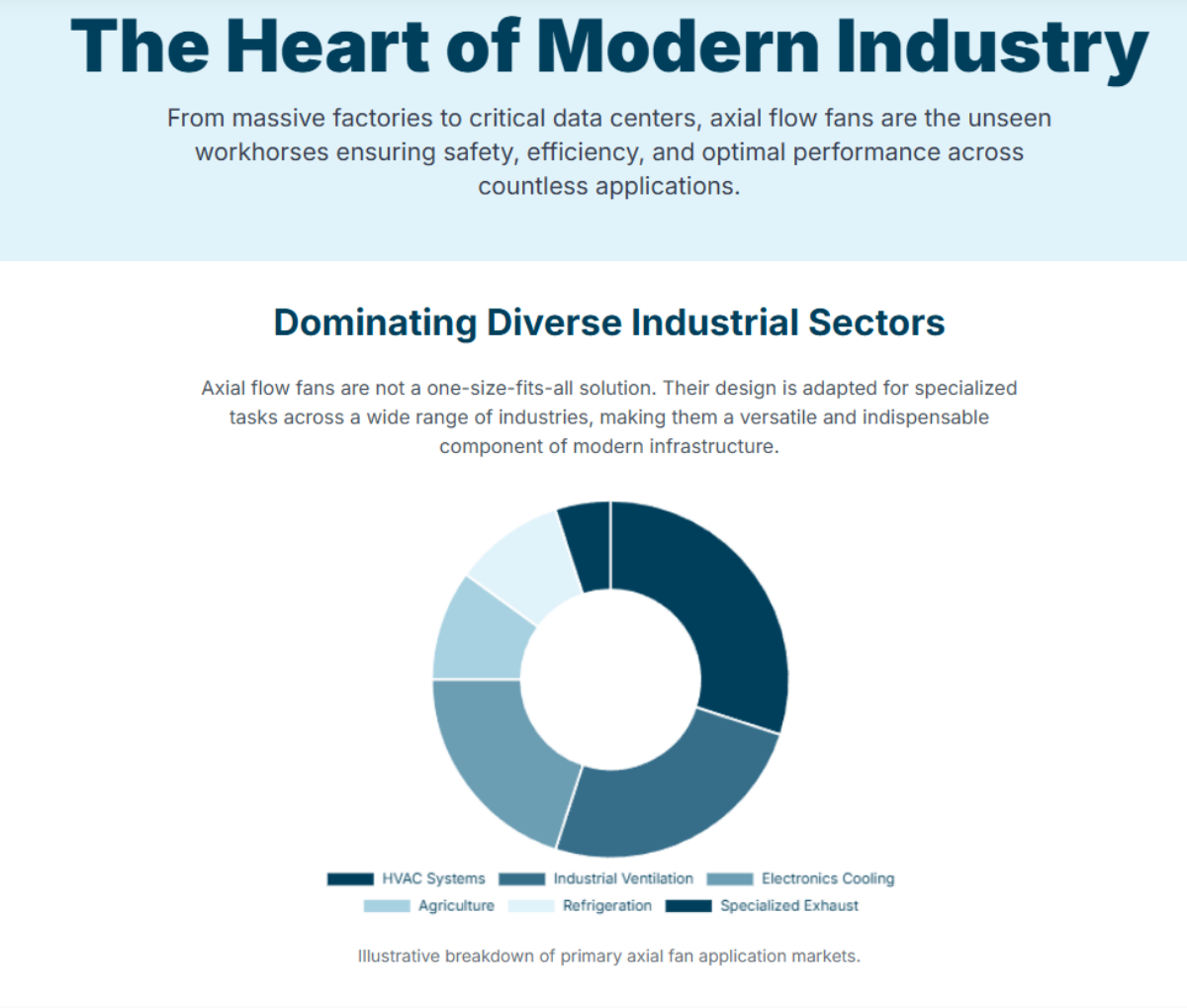
Air Quality
You need clean air in every industrial space. Factories, warehouses, and workshops often fill up with dust, fumes, or other particles. An axial flow fan helps you remove these unwanted elements quickly. When you use this fan, you push fresh air into the building and pull out dirty air. This process keeps the air safe for you and your coworkers. You also protect machines from dust buildup, which can cause breakdowns.
Tip: Place fans near sources of pollution, like welding stations or paint areas. This setup helps you capture harmful particles before they spread.
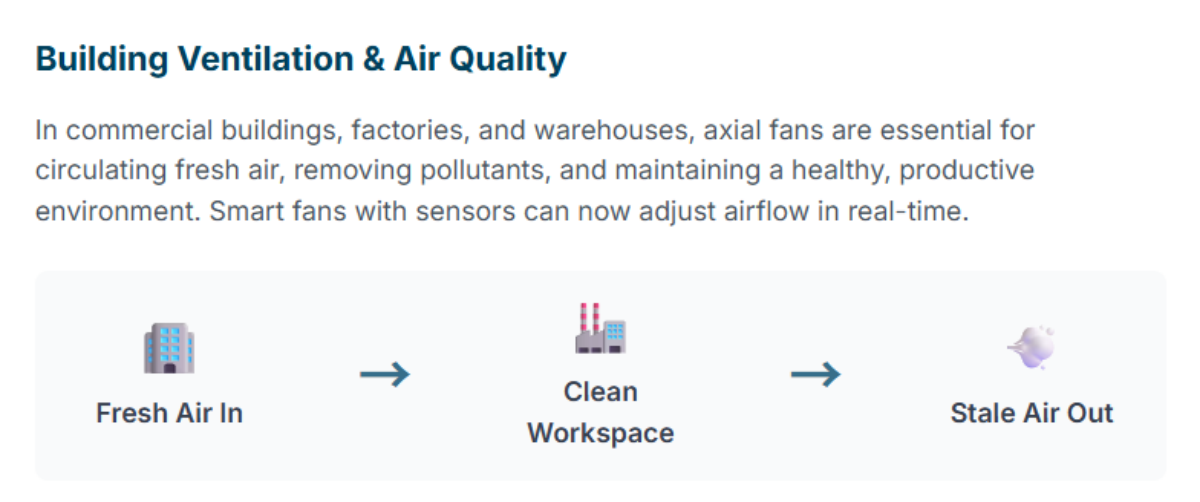
Many companies now use sensors to check air quality in real time. If the air gets too dirty, the system tells the fan to work harder. You get a healthier workspace and fewer sick days. In 2025, you see more factories using smart fans that adjust speed based on air quality data. This technology saves energy and keeps the air fresh all day.
Exhaust Systems
You must remove hot air, smoke, or chemical fumes from your work area. Exhaust systems use axial flow fans to move large volumes of air outside. For example, in a metal workshop, you need to get rid of welding fumes fast. The fan pulls the fumes out and brings in clean air. This setup protects your lungs and keeps the workspace comfortable.
Use exhaust fans in:
Paint booths
Chemical storage rooms
Food processing plants
You also meet safety rules by using proper exhaust systems. Many industries must follow strict laws about air quality. With the right fan, you avoid fines and keep everyone safe.
Electronics Cooling

Server Rooms
You rely on server rooms to keep your business running. Computers and network equipment create a lot of heat. If you do not control the temperature, your machines can slow down or even break. An axial flow fan helps you move hot air out and bring cool air in. This keeps your servers at the right temperature. You can place these fans above racks or near vents. Many companies use temperature sensors to check the heat level. When the room gets too warm, the fan turns on and cools things down fast.
Tip: Place your fans so they push hot air away from sensitive equipment. This setup helps you avoid overheating and keeps your network safe.
You also save money on repairs. When your equipment stays cool, it lasts longer. You spend less time fixing problems and more time working.
Data Centers
Data centers hold thousands of servers. These machines work all day and night. They need strong airflow to stay cool. You use an axial flow fan to move large amounts of air through the building. This fan helps you keep every server at a safe temperature. Many data centers use smart systems to control the fans. These systems check the temperature and adjust the fan speed. You get the right amount of cooling without wasting energy.
Benefits of using axial flow fans in data centers:
Lower energy bills
Fewer equipment failures
Better performance
You also help the environment. Energy-efficient fans use less power. This means your data center creates less pollution.
Agriculture
Livestock Buildings
You need to keep animals healthy and comfortable. Good airflow helps you control temperature, humidity, and odors in barns or poultry houses. When you use fans, you move fresh air into the building and push out stale air. This process helps you lower the risk of disease and heat stress. Animals eat better and grow faster when they feel comfortable.
Tip: Place fans near the ceiling to pull hot air up and away from animals. This setup keeps the floor cooler and reduces moisture.
Many farms now use smart sensors to check air quality and temperature. These sensors tell the fans when to turn on or off. You save energy and keep the environment just right for your animals. In 2025, you see more farms using automated systems to control airflow. These systems help you meet animal welfare standards and improve productivity.
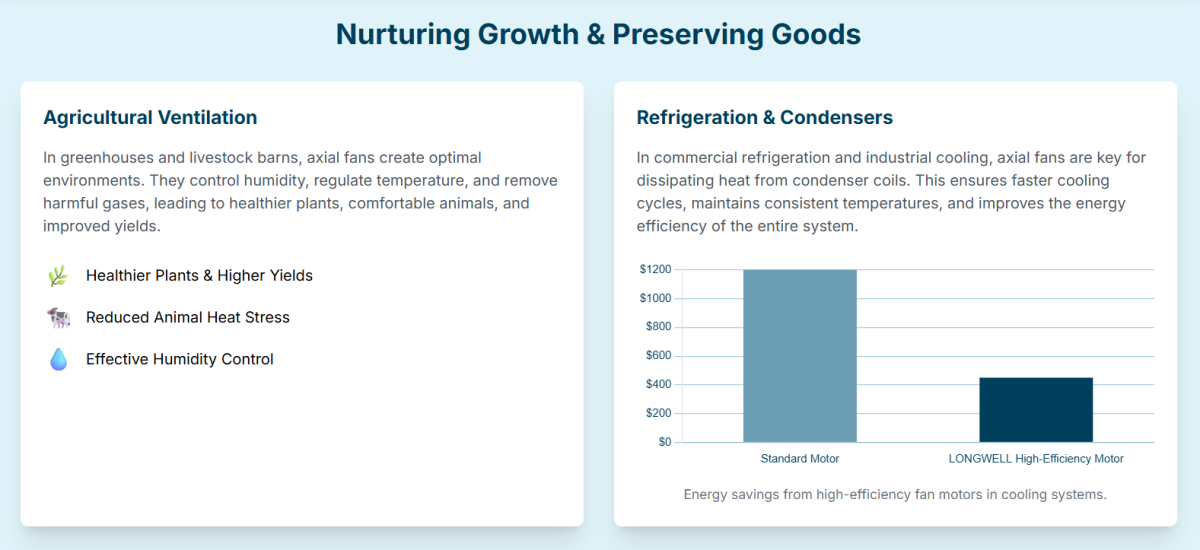
Greenhouses
Plants need fresh air and the right temperature to grow strong. You use fans to move air through the greenhouse, which helps you control humidity and prevent mold. Good airflow also helps you spread heat evenly, so every plant gets the same care.
Benefits of using fans in greenhouses:
Healthier plants
Fewer pests
Better yields
You can set up fans to work with climate control systems. When the greenhouse gets too hot or humid, the system turns on the fans. This action protects your crops from stress and disease. Many growers use an axial flow fan because it moves large amounts of air with less energy. You get a better harvest and save money on power bills.
Industrial Processes
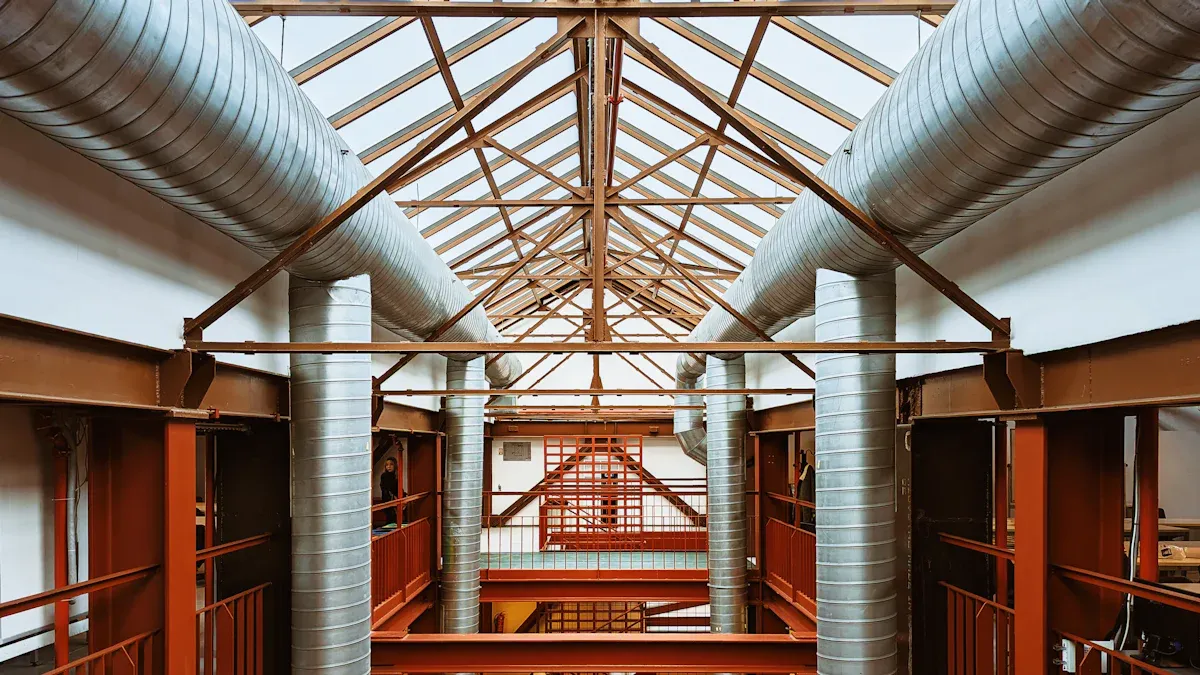
Heat Dissipation
You must control heat in many factories. Machines and ovens make a lot of heat. Motors also get hot when they run. If heat builds up, equipment can break. Production might slow down too. An axial flow fan moves hot air away from machines. You can put the fan near machines or inside covers. This keeps the temperature safe.
Note: Using fans for heat dissipation protects electronics. It also helps your equipment last longer.
Factories use sensors to check heat levels. When it gets too hot, the fan turns on. This keeps your workspace cool and safe. You lower the risk of overheating. This helps you avoid costly downtime.
Drying Operations
Many industries need to dry things fast. Food processing, textiles, and paper plants all need this. Airflow is very important for drying. An axial flow fan moves lots of air over wet surfaces. This makes water dry faster. You finish jobs more quickly.
Common drying applications:
Drying painted parts in car plants
Taking moisture out of packaged foods
Speeding up drying of textiles
You can change the fan speed for each product. Some systems use timers or humidity sensors. These control when the fan turns on or off. This saves energy and makes drying even. You get better products and more output.
Tip: Put fans so air covers all surfaces. This stops uneven drying and cuts down on waste.
Refrigeration
Cooling Units
You need reliable cooling in many industries. Cooling units keep food fresh, medicines safe, and products at the right temperature. You use fans to move cold air inside large refrigerators or freezers. These fans help you spread cool air evenly. When you place products on different shelves, the fan makes sure every item gets the same cold air. This stops warm spots from forming.
Tip: Place temperature sensors near the doors. When you open a door, the sensor can tell the fan to work harder. This helps you keep the temperature steady, even when people come and go.
Many modern cooling units use smart controls. These systems check the temperature and adjust the fan speed. You save energy because the fan only runs when needed. You also protect your products from spoilage. In 2025, you see more cooling units with energy-efficient motors. These motors last longer and use less power.
Condensers
Condensers play a big role in refrigeration. You find them in supermarkets, cold storage warehouses, and food factories. The condenser removes heat from the system. You use fans to blow air over the condenser coils. This air flow helps the coils release heat faster.
Benefits of using fans in condensers:
Faster cooling cycles
Lower energy bills
Longer equipment life
You can set up fans to run at different speeds. When the system gets hot, the fan speeds up. When it cools down, the fan slows. This keeps the condenser working well and saves power. Many companies use sensors to check coil temperature. The system turns the fan on or off as needed. You get better performance and fewer breakdowns.
Note: Clean the condenser coils often. Dust and dirt can block airflow and make the system work harder.
Power Generation
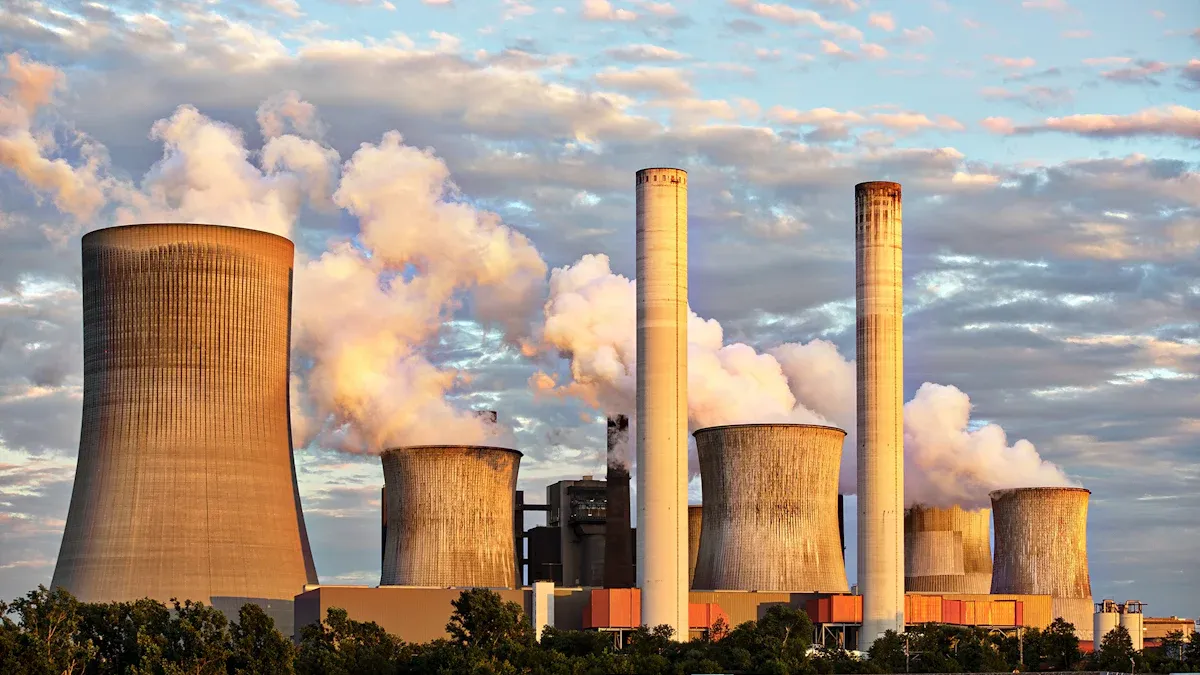
Turbine Cooling
You need to keep turbines cool in power plants. Turbines work hard and create a lot of heat. If you let them get too hot, they can break or lose efficiency. You use fans to move air over the turbine surfaces. This airflow helps remove heat quickly. You protect the turbine and make sure it runs smoothly.
Many power plants use smart sensors to watch the temperature. When the turbine gets hot, the system turns on the fans. You do not have to guess when to cool the turbine. The system does it for you. This process saves energy and keeps the equipment safe.
Tip: Place fans so they blow air directly onto the hottest parts of the turbine. This setup gives you the best cooling effect.
Some plants use variable speed fans. These fans change speed based on how much cooling you need. You save power and reduce wear on the equipment. In 2025, you see more plants using energy-efficient motors. These motors last longer and use less electricity.
Generator Rooms
You also need to control the temperature in generator rooms. Generators make electricity, but they also make heat. If the room gets too hot, the generator can fail. You use fans to move hot air out and bring cool air in. This airflow keeps the generator at a safe temperature.
You can set up fans to work with temperature sensors. When the room heats up, the fans turn on. You do not have to worry about overheating. Many generator rooms use backup fans for extra safety. If one fan stops, another starts right away.
Benefits of good airflow in generator rooms:
Longer equipment life
Fewer breakdowns
Lower repair costs
You keep your power plant running smoothly and avoid costly downtime.
Mining and Metals
Tunnel Ventilation
You work in mines and tunnels where fresh air is vital. Underground spaces can fill with dust and harmful gases. You need a way to keep the air safe for everyone. Large fans help you move air through long tunnels. These fans push fresh air in and pull dirty air out. Their design lets them move a lot of air at low pressure, which fits tunnel needs. You place these fans at tunnel entrances or along the tunnel path. Air flows in the same direction as the tunnel, reaching deep inside. This setup keeps oxygen levels high and removes dangerous fumes. Workers breathe easier and stay safe.
Note: Good tunnel ventilation lowers the risk of accidents and helps you meet safety rules.
Many mines use sensors to check air quality. When gas or dust levels rise, the system turns on the fans. You do not have to guess when to act. The fans respond quickly, keeping the air clean.
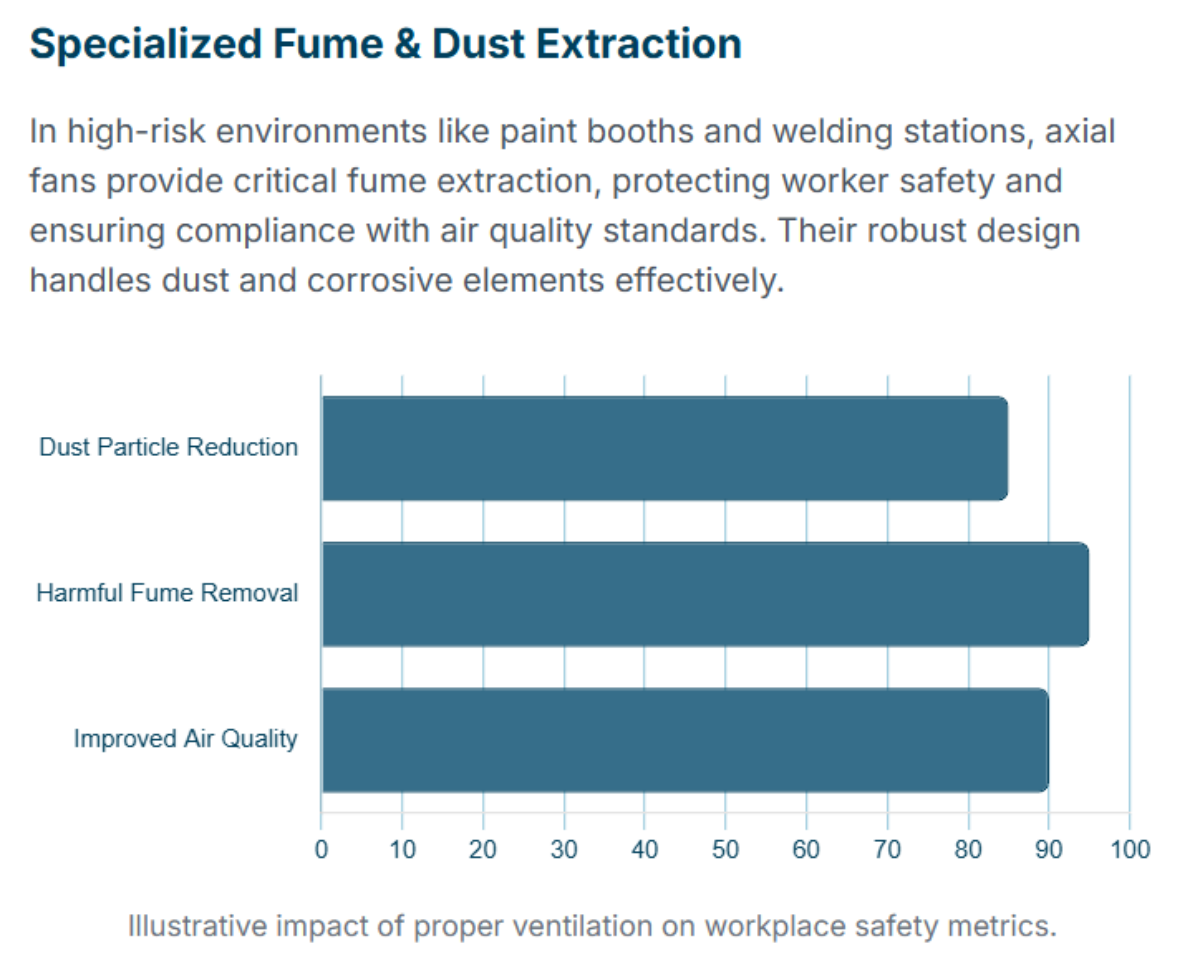
Dust Control
Mining and metal work create a lot of dust. Dust can harm your lungs and damage machines. You need to control it to protect people and equipment. Fans help you move dust away from work areas. You can set up fans near crushers, conveyors, or loading points. The moving air carries dust to filters or out of the tunnel. This keeps your workspace clear.
Benefits of dust control:
Healthier workers
Fewer machine breakdowns
Cleaner products
You can use water sprays with fans for even better results. The water traps dust, and the fans move it out. Many sites use automatic systems that turn on fans when dust sensors detect a problem. This saves energy and keeps the air safe all day.
Tip: Clean fan blades often. Dust buildup can slow them down and reduce airflow.
Paint and Welding Booths

ume Extraction
You work in paint and welding booths where fumes fill the air quickly. These fumes come from chemicals, paints, and welding materials. You need to remove them fast to keep the air clean. Fans help you pull fumes out of the booth and send them outside. You place fans above or behind the work area. This setup creates a steady flow of air that moves fumes away from your breathing zone.
Tip: Use fans with variable speed controls. You can adjust the airflow based on the amount of fumes in the booth.
Many modern booths use sensors to check air quality. When fumes rise, the system turns on the fans. You do not have to guess when to start the system. This process keeps the air safe and helps you meet safety rules.
Worker Safety
You want to protect yourself and your team from harmful gases and particles. Good airflow lowers the risk of breathing in dangerous fumes. You also reduce the chance of fire or explosion by moving flammable vapors out of the booth. Clean air helps you stay alert and focused on your work.
Benefits of proper ventilation in booths:
Fewer health problems
Lower risk of accidents
Better work quality
You can add filters to the fans to catch small particles. This step gives you even cleaner air. Many companies train workers to check fans and filters often. You keep the system working well and protect everyone in the booth.
Chemical Factories
Controlled Environments
Working in chemical factories means safety is very important. Chemicals can make fumes or vapors that hurt people and machines. You need to keep the air clean and steady. Fans help control the temperature, humidity, and how air moves. The right fan lowers accident risks and keeps workers safe. Fans also help keep products pure and stop contamination.
Note: Many chemical plants use fans with special coatings. These coatings stop damage from strong chemicals. This makes equipment last longer and need fewer repairs.
You must follow strict rules in chemical factories. Government groups set rules for air quality and worker safety. You meet these rules by using strong fans that move enough air. Sensors and smart controls help you change airflow when needed. This keeps your factory safe and running well.
Air Supply
Every part of your plant needs fresh air all the time. Fans bring in outside air and push out bad or dangerous air. This keeps oxygen high and removes harmful gases. You protect your team and your machines.
Key benefits of good air supply:
Safer work areas
Better product quality
Fewer machine problems
Some places need more air than others. You can put fans in high-risk spots like storage rooms or mixing areas. Many new systems use sensors to check air quality. When gas levels go up, the system turns on the fans. You can fix problems fast.
You often pick an axial flow fan for these jobs. It moves lots of air and fits well in ducts or big rooms. You meet safety rules and keep your plant working well.
Axial Flow Fan Applications
Industry Trends
You see new trends shaping how you use fans in industry. Many companies now focus on saving energy. You choose fans with high-efficiency motors to lower your power bills. Smart controls let you adjust fan speed based on real-time needs. This helps you avoid wasting energy when demand drops. You also notice more fans using sensors. These sensors track air quality, temperature, and humidity. When conditions change, the system tells the fan to speed up or slow down. You get better control and safer workspaces.
Note: Many industries now want quieter work environments. You can pick fans with special blades that reduce noise. This makes your factory or plant more comfortable for everyone.
You also see more companies using fans made from recycled materials. This helps you meet green goals and reduce waste. In 2025, you find that digital monitoring tools make it easy to track fan performance. You spot problems early and keep your equipment running longer.
Emerging Uses
You find new ways to use an axial flow fan every year. In vertical farming, you use fans to move air between plant layers. This helps you grow more food in less space. In battery manufacturing, you need clean air to protect sensitive parts. Fans help you keep dust and particles away from your products.
Here are some new applications you might see:
Cooling for electric vehicle charging stations
Airflow in 3D printing labs
Ventilation in drone testing facilities
You also see fans used in disaster relief shelters. These fans help you keep air fresh when many people share a small space. As technology grows, you will find even more uses for these fans in new industries.
You can find an axial flow fan in many places. These fans cool data centers and clean factory air. They help you use less energy and work more safely. You also get more work done with these fans. New features make them even better for your needs. Smart controls let you change settings easily. Strong materials help the fans last longer. IoT systems help you fix problems fast.
Pick energy-saving designs to spend less money.
Use smart monitoring to control fans right away.
Try solar-powered fans to help the planet.
Think about how these new ideas can help your business grow and stay ahead.
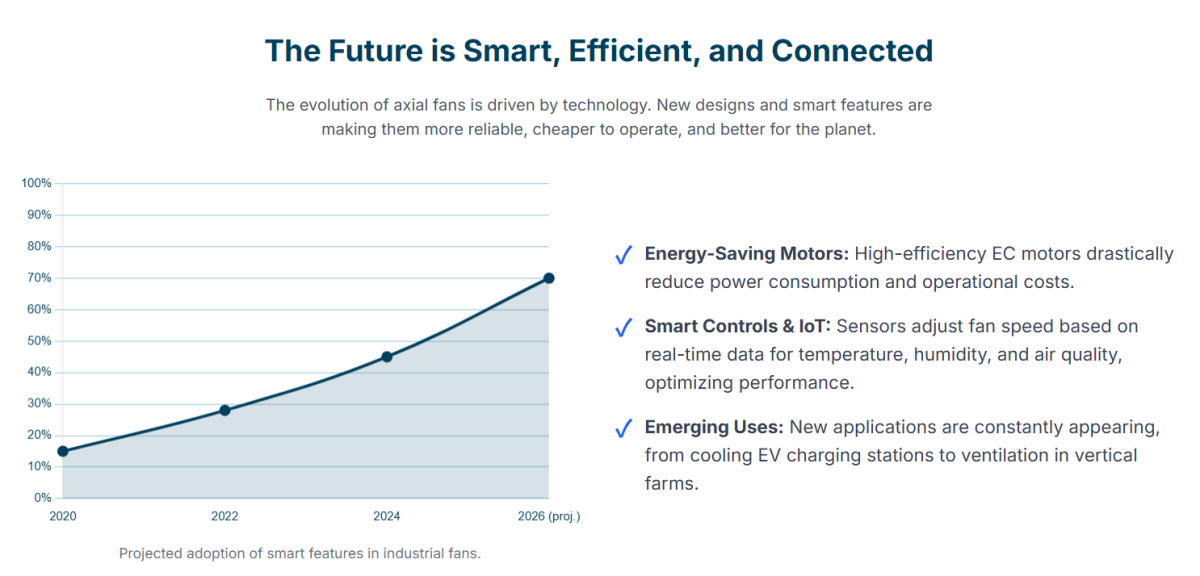
FAQ
What is an axial flow fan?
You use an axial flow fan to move air in a straight line. The blades push air forward, which helps you cool, ventilate, or dry spaces. These fans work well in large areas.
How do you choose the right size fan?
You check the size of your space and how much air you need to move. Look at the fan’s airflow rating, measured in cubic feet per minute (CFM). Pick a fan that matches your needs.
Where do you install axial flow fans?
You install these fans in places like factories, greenhouses, server rooms, and tunnels. You can mount them on walls, ceilings, or inside ducts. Always follow safety guidelines.
How do you maintain an axial flow fan?
You clean the blades and check for dust or dirt. Inspect the motor and wiring often. Lubricate moving parts if needed. Regular checks help your fan last longer.
Are axial flow fans energy efficient?
Many new fans use energy-saving motors and smart controls. You save power by adjusting fan speed based on real-time needs. This helps you lower your energy bills.

